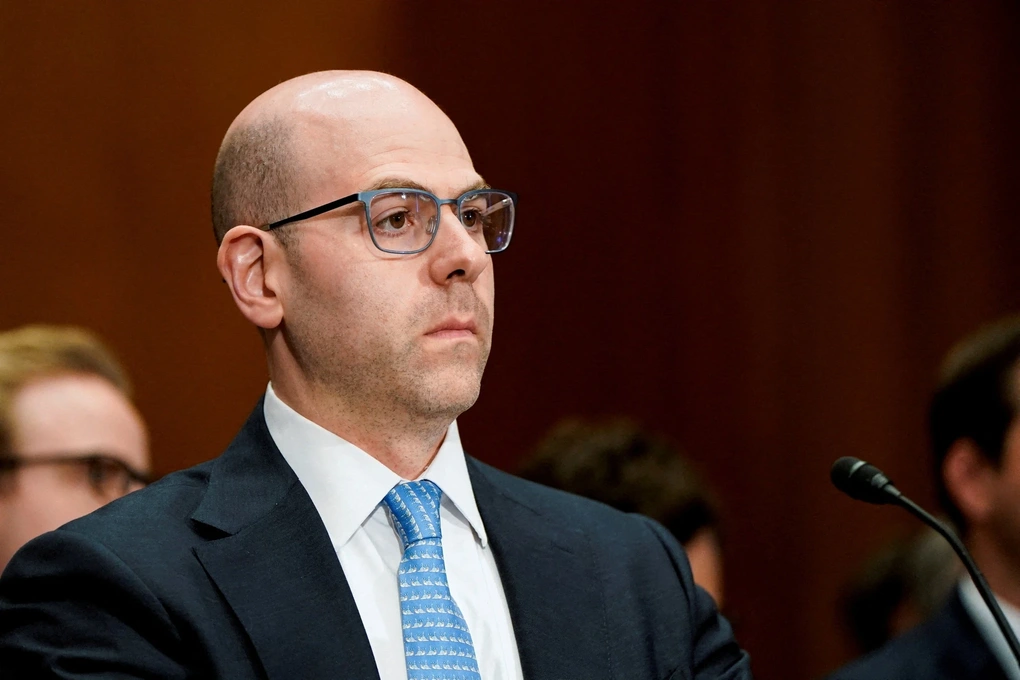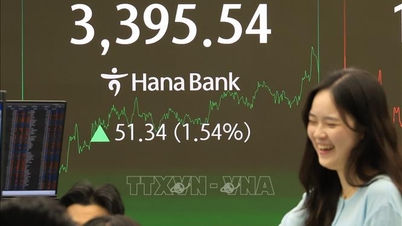The US Federal Reserve (Fed) has just released the minutes of its September meeting. Specifically, the minutes show that most members of the Federal Open Market Committee (FOMC) agreed that the weakening labor market situation was the main reason for the Fed to lower the base interest rate.
However, members were divided on whether to make two or three cuts this year, including the 0.25% reduction approved at the September 17 meeting.
"Most members considered that following this rate cut, the Committee was well positioned to respond flexibly to upcoming economic developments," the minutes said.
The FOMC was closely divided among the 19 members present, including 12 who had voting rights. The vote ended with 11 members voting in favor of cutting the interest rate by 0.25%, bringing the federal funds rate to a range of 4-4.25%.
A majority of members favored two more rate cuts this year, each of 0.25%. The accompanying forecast suggests the Fed could make one more cut in 2026 and 2027, before settling at a long-term level of around 3%.
The meeting was also the first attended by new FOMC Governor Stephen Miran, who took office just hours before the start of the session. Miran was the only dissenting member, favoring a larger 0.5% cut. Miran later admitted in a media interview that he was the “lone dot” in favor of a more dovish stance than the rest of the FOMC.

Mr. Stephen Miran, new Governor of the Fed (Photo: Reuters).
In his speech on September 23, Chairman Powell did not dismiss market expectations. He emphasized that the Fed will continue to assess growth, employment and inflation, asking the question: "Is our policy on track? If not, we will adjust."
Some officials have been cautious about further easing of monetary policy, concerned that inflation, which has been running above the 2% target for more than four years, could become a “new normal” if people and businesses get used to 3% price increases.
The minutes also noted that some members called for more caution, saying that current financial conditions were "no longer overly tight," so the Fed needed to consider carefully before taking further steps.
"A majority of members saw a need to adjust the target range for the federal funds rate to a more neutral level, given the increased risks to employment and the moderation of inflation pressures," the meeting document said.
Tariffs imposed by President Donald Trump were also discussed, with many members saying the tariffs would only temporarily raise prices this year but would not create sustained inflation.
According to CNBC, in the trading session on October 8, the S&P 500 index increased by 0.58% to 6,754 points thanks to the increase of information technology, utilities and industrial sectors. The technology-oriented Nasdaq Composite index increased by 1.12%, closing at 23,043 points.
The AI stock frenzy shows no signs of abating and continues to be the biggest driver of growth in US stocks. Nvidia shares rose 2.2% in the session after CEO Jensen Huang revealed that demand for the company’s products has increased in recent months. The stock is up nearly 37% this year.
Typically, economic data released after meetings helps the Fed solidify or adjust its stance. However, the shutdown is presenting a new challenge for the Fed. With the Labor and Commerce Departments shut down, the Fed is lacking key data on inflation, employment and consumer spending - key factors in guiding policy.
Meanwhile, amid growing internal divisions, Chairman Jerome Powell is trying to strike a balance. He has said that the two-way risk means there is no path that is completely risk-free. If the Fed cuts too much, it could cause inflation to rise, but if it keeps rates too high, it risks losing jobs.
Source: https://dantri.com.vn/kinh-doanh/fed-vua-tiet-lo-tin-hieu-gi-ma-thi-truong-tai-chinh-toan-cau-day-song-20251009131353797.htm


![[Photo] President Luong Cuong attends the 80th Anniversary of the Traditional Day of Vietnamese Lawyers](https://vphoto.vietnam.vn/thumb/1200x675/vietnam/resource/IMAGE/2025/10/09/1760026998213_ndo_br_1-jpg.webp)

![[Photo] General Secretary To Lam visits Kieng Sang Kindergarten and the classroom named after Uncle Ho](https://vphoto.vietnam.vn/thumb/1200x675/vietnam/resource/IMAGE/2025/10/09/1760023999336_vna-potal-tong-bi-thu-to-lam-tham-truong-mau-giao-kieng-sang-va-lop-hoc-mang-ten-bac-ho-8328675-277-jpg.webp)
![[Photo] Prime Minister Pham Minh Chinh chairs a meeting of the Government Standing Committee on overcoming the consequences of natural disasters after storm No. 11](https://vphoto.vietnam.vn/thumb/1200x675/vietnam/resource/IMAGE/2025/10/09/1759997894015_dsc-0591-jpg.webp)





























































































Comment (0)